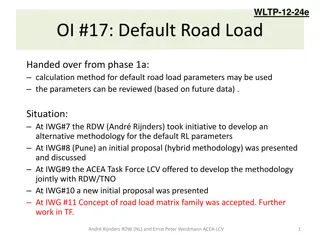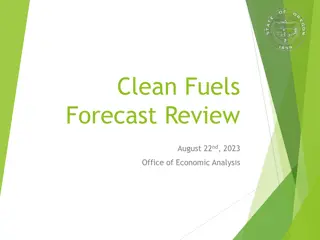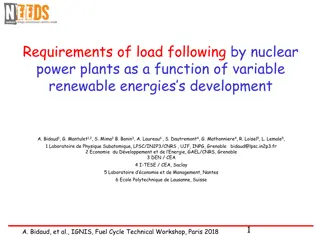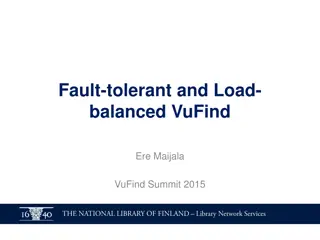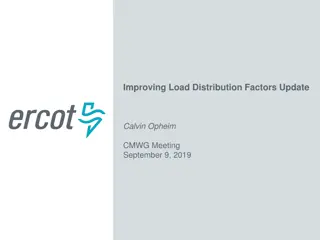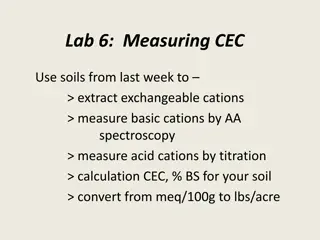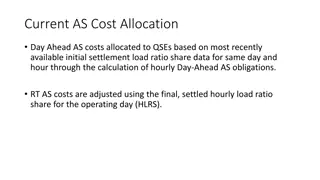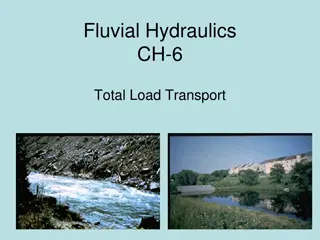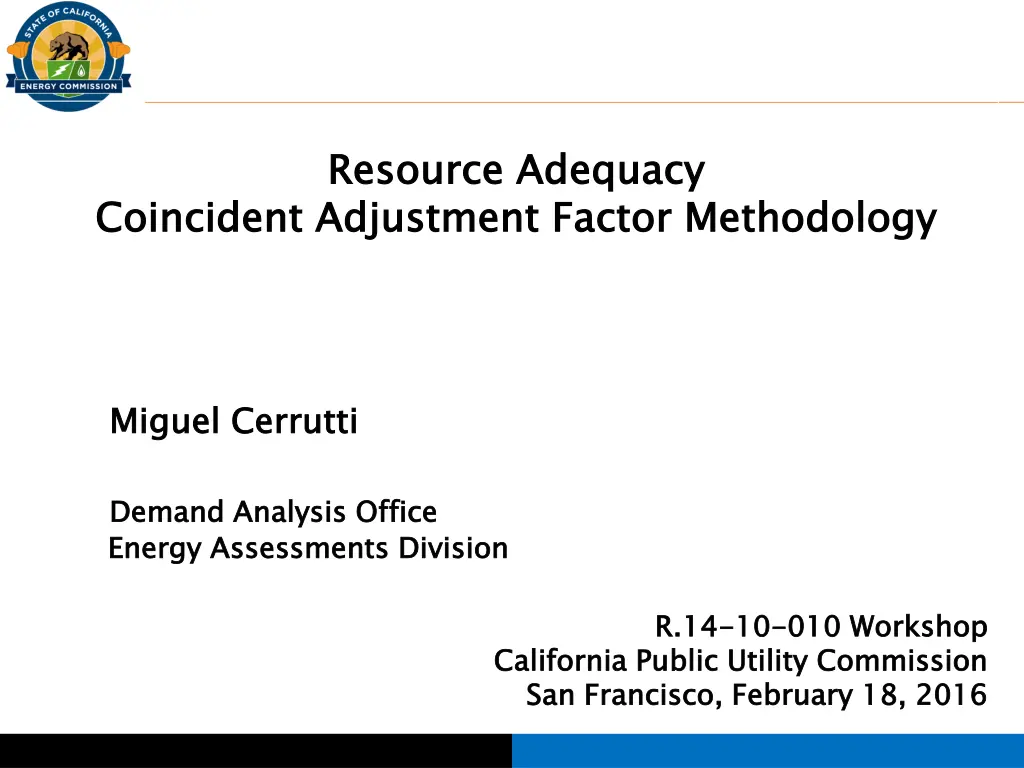
Coincidence Factor Methodology for Resource Adequacy Analysis
Explore the intricacies of calculating Coincidence Factors (CF) in Resource Adequacy assessments for Load Serving Entities (LSEs) and gaining insights into peak load forecasts, accuracy, and subsidy considerations.
Download Presentation

Please find below an Image/Link to download the presentation.
The content on the website is provided AS IS for your information and personal use only. It may not be sold, licensed, or shared on other websites without obtaining consent from the author. If you encounter any issues during the download, it is possible that the publisher has removed the file from their server.
You are allowed to download the files provided on this website for personal or commercial use, subject to the condition that they are used lawfully. All files are the property of their respective owners.
The content on the website is provided AS IS for your information and personal use only. It may not be sold, licensed, or shared on other websites without obtaining consent from the author.
E N D
Presentation Transcript
Resource Adequacy Resource Adequacy Coincident Adjustment Factor Methodology Coincident Adjustment Factor Methodology Miguel Miguel Cerrutti Cerrutti Demand Energy Demand Analysis Energy Assessments Analysis Office Assessments Division Office Division R.14 R.14- -10 10- -010 Workshop 010 Workshop California Public Utility Commission San Francisco, February 18, 2016 California Public Utility Commission San Francisco, February 18, 2016
Outline Outline The The problem problem Coincidence Coincidence factor factor (CF) (CF) Best Best approaches approaches for for calculating calculating CF CF Improvements Improvements
The problem The problem LSE load LSE- -specific load peak specific year peak forecasts year- -ahead forecasts for ahead and for RA and month RA compliance month- -ahead compliance ahead LSE time LSE- -specific time of specific peak of CAISO s peak load peaks load contribution contribution at at the the CAISO s peaks Accuracy Accuracy and and unbiasedness unbiasedness Transparency Transparency / / consistency consistency
Coincidence factor (CF) Coincidence factor (CF) Ratio peaks (NCP) Ratio LSE s peaks (CP) (NCP) LSE s peaks (CP) to peaks at to the at time LSE s non time of non- -coincident of CAISO coincident peaks CAISO coincident coincident peaks the LSE s how CAISO s CAISO s LSEs cross how close CAISO s five CAISO s peaks LSEs with cross- -subsidization close LSE s five top peaks strongly with most subsidization - - RES/COM/IND LSE s peak top monthly strongly correlated most RES peak dates/hours monthly peak correlated with RES load RES/COM/IND dates/hours are peak dates/hours are to to dates/hours with RES coincident RES load - - most most coincident CAISO s LSEs CAISO s peaks LSEs capacity peaks - - capacity capacity obligation capacity to obligation / / costs to be be procured costs procured
Load profile Load profile January January ISO peak ISO peak 1.00 COM/IND COM/IND 0.90 0.80 0.70 0.60 RES RES 0.50 0.40 0.30 0.20 0.10 Source: LM 2012 Source: LM 2012 0.00 1 2 3 4 5 6 7 8 9 10 11 12 13 14 15 16 17 18 19 20 21 22 23 24
Coincidence factor (CF) Coincidence factor (CF) LSEs across LSEs load across time load profiles time in profiles display in load display significant load shapes significant variation shapes and variation of peaks and time time of peaks Hourly CAISO CPUC Hourly loads CAISO EMS/OASIS/five CPUC jurisdictional/non loads time EMS/OASIS/five top jurisdictional/non- -jurisdictional time- -series series top monthly jurisdictional LSEs monthly peaks peaks LSEs LSE LSE- -specific specific CF CF LSE LSE- -composite load composite CF load migration CF ESPs/CCAs and new ESPs/CCAs new ESPs/CCAs migration and ESPs/CCAs
Best approaches for calculating CF Best approaches for calculating CF Historic Historic approach approach CF CF CF CF CF in CF over CF weather CF trends in the over the weather normalized trends over the most the previous normalized over time most recent previous 3 3 or recent year year or 5 5 years years / / median median time Forward / / forecast Forward forecast approach approach CF CF in in the the next next year year
Best approach Best approach historic approach historic approach CF CF variation variation over over time time load composition stable heavily no weather easy best composition RES, stable over heavily drives no easy weather temperature easy to best expected load RES, COM, limited migrating LSEs peak to correlate temperature to correlate expected coincidence COM, IND, migrating load peak forecasts correlate to correlate to coincidence patterns IND, H H2 2O O over time drives LSEs easy to time - - limited load forecasts to peak peak granularity to peak patterns granularity peak
Best approach Best approach historic approach historic approach Evaluation and Evaluation rule and time rule load of peaks load profile peaks profile stability stability over over time time time of CF load times CF in load profile times in the profile / / not the most most recent not differ recent year differ much year - - LSE s much from LSE s stable from CAISO s stable CAISO s CF unstable CAISO s CF over unstable load CAISO s times over three three to load profile times to five profile / / differ five previous previous years differ much years LSE s much from LSE s from
Best approach Best approach Weather normalized Weather normalized CAISO s (WN) CAISO s five (WN) coincident five top coincident peaks top monthly peaks monthly weather weather normalized normalized Time historical Probability Time- -series historical weather Probability of series multi weather / / Monte of exceedance multi- -step step regressive Monte Carlo exceedance distribution regressive model Carlo simulation distribution model simulation LSEs LSEs CF CF - - WN WN CAISO CAISO- -coincident coincident peaks peaks WN and WN factor and LSE s factor - - ratio LSE s median ratio of median of of WN of five WN CAISO five top CAISO- -coincident top coincident coincident peaks coincident peaks peaks peaks
Best approach Best approach Forward / forecast approach Forward / forecast approach Forward new most forecast Forward new ESPs/CCAs most recent forecast non ESPs/CCAs- -specific recent hourly non- -coincident specific CF hourly load coincident peaks/growth CF shapes service peaks/growth rates load shapes service area area rates Forecast validation CF as forecast NCP NCP / / CP CF / / weather forecast CP best forecasting methodology Forecast CF forecast NCP CF forecast best m validation function of NCP / / CP CP weather weather differences CP WN forecasting practices ethodology adequately as a a function of load CP weather differences at WN POE practices / / reviewing adequately / / reasonably load factors factors at NCP/CP NCP/CP times times POE50 50 reviewing reasonably CP CP
Preliminary Preliminary results results LSE LSE Moy Moy CF CF CF CF CF CF CF CF WN factor WN factor 0ne- -year 0ne year three years three- - years forward forecast forward forecast average average LSE1 LSE1 5 5 .855 .855 .917 .917 LSE2 LSE2 2 2 .860 .860 .717 .717 New CCA New CCA 7 7 .922 .922 .841 .841 New CCA New CCA 8 8 .945 .945 .941 .941 7 7 .752 .752 .846 .846 LSE3 LSE3 8 8 1.152 1.152 LSE4 LSE4 8 8 .802 .802 CF RES CF RES CF CF COM/IND .865 COM/IND .865 LSE5 LSE5 7 7 .985 .985 .985 .985 .955 .955
Improvements Improvements Embedding Embedding DR DR impacts impacts in in submitted submitted data data Posting peak Posting CAISO s peak load CAISO s five load dates five top and hours top monthly hours monthly coincident coincident dates and Exploring be easy Exploring alternative be relatively easy to alternative methods relatively stable to calculate methods over time monitor / / apply stable over calculate / / monitor time apply Validation load variations forecasting Validation - - adjustment load migration variations in forecasting an adjustment migration in weather an art weather and art as and load as much load composition much as composition as a a science science
And so if And so if






